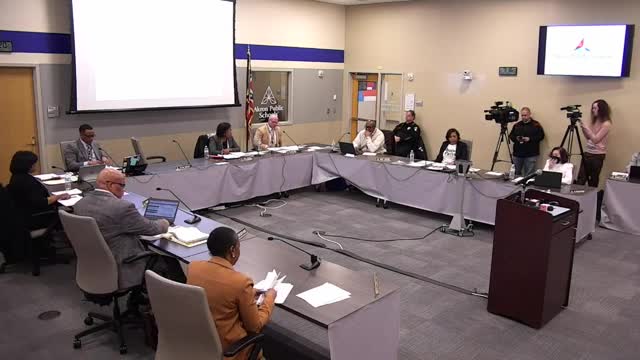Akron Public Schools reports financial challenges amid budget uncertainties
February 25, 2025 | Akron City, School Districts, Ohio
This article was created by AI summarizing key points discussed. AI makes mistakes, so for full details and context, please refer to the video of the full meeting. Please report any errors so we can fix them. Report an error »

In a recent Board of Education meeting held on February 24, 2025, the Akron City School District's financial health took center stage, highlighting the challenges and uncertainties surrounding funding and expenditures. The discussions underscored the critical link between financial management and student learning, as board members reviewed the January financial report and its implications for the district's future.
The treasurer presented a detailed overview of the district's finances, revealing a year-to-date revenue of approximately $189.1 million, which is about $1.9 million higher than the previous year, largely due to the successful passage of a recent levy. However, the projected cash balance for June 30 is concerningly lower, estimated at $80.65 million, raising alarms about potential deficit spending. The treasurer emphasized that while the district is currently not in a deficit, the trend of expenditures exceeding revenues is alarming, with January expenditures totaling nearly $33 million—an increase of $3.79 million from the same month last year.
A significant point of discussion was the impact of House Bill 920, which freezes school funding levels, limiting the district's ability to adapt to rising costs. This legislative constraint means that even as expenses increase—primarily driven by salaries and benefits—the district's revenue remains stagnant, creating a precarious financial situation. The treasurer noted that the district is at risk of depleting its cash reserves faster than anticipated, which could lead to difficult decisions regarding further budget reductions or potential ballot measures for additional funding.
Board members expressed concerns about the sustainability of the current financial trajectory, particularly regarding the necessity of maintaining adequate cash reserves for emergencies. The treasurer reassured members that while the district is currently drawing from reserves, it is essential to implement approved budget reductions to stabilize finances moving forward.
In addition to the financial report, the board approved a resolution for bond issuance related to capital projects, ensuring compliance with Ohio law and safeguarding public funds. This resolution is crucial for maintaining transparency and accountability in the district's financial dealings.
As the meeting concluded, the board acknowledged the need for ongoing vigilance in financial management, with plans for further reductions and a commitment to ensuring that the district can continue to meet its educational obligations despite the financial challenges ahead. The discussions highlighted the importance of strategic planning and community engagement as the district navigates these turbulent financial waters.
The treasurer presented a detailed overview of the district's finances, revealing a year-to-date revenue of approximately $189.1 million, which is about $1.9 million higher than the previous year, largely due to the successful passage of a recent levy. However, the projected cash balance for June 30 is concerningly lower, estimated at $80.65 million, raising alarms about potential deficit spending. The treasurer emphasized that while the district is currently not in a deficit, the trend of expenditures exceeding revenues is alarming, with January expenditures totaling nearly $33 million—an increase of $3.79 million from the same month last year.
A significant point of discussion was the impact of House Bill 920, which freezes school funding levels, limiting the district's ability to adapt to rising costs. This legislative constraint means that even as expenses increase—primarily driven by salaries and benefits—the district's revenue remains stagnant, creating a precarious financial situation. The treasurer noted that the district is at risk of depleting its cash reserves faster than anticipated, which could lead to difficult decisions regarding further budget reductions or potential ballot measures for additional funding.
Board members expressed concerns about the sustainability of the current financial trajectory, particularly regarding the necessity of maintaining adequate cash reserves for emergencies. The treasurer reassured members that while the district is currently drawing from reserves, it is essential to implement approved budget reductions to stabilize finances moving forward.
In addition to the financial report, the board approved a resolution for bond issuance related to capital projects, ensuring compliance with Ohio law and safeguarding public funds. This resolution is crucial for maintaining transparency and accountability in the district's financial dealings.
As the meeting concluded, the board acknowledged the need for ongoing vigilance in financial management, with plans for further reductions and a commitment to ensuring that the district can continue to meet its educational obligations despite the financial challenges ahead. The discussions highlighted the importance of strategic planning and community engagement as the district navigates these turbulent financial waters.
View full meeting
This article is based on a recent meeting—watch the full video and explore the complete transcript for deeper insights into the discussion.
View full meeting
